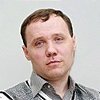On September 25 German citizens made their choice. News that the far-right populist party “Alternative for Germany” (hereinafter — AfD) will be the third largest faction in the Bundestag in 2017–2021, filled the headlines. However, German parliamentary election results are interesting not only from this perspective.
First of all, for the first time in 70 years, German citizens elected seven political parties to the parliament. Secondly, populism is represented not just by the far-right AfD, but also by the far-left “Die Linke”. Thirdly, Bundestag will have one more party with more extensive experience of populist rhetoric — Alliance 90/The Greens (B’90/Grüne). This political force, together with the “Die Linke” party, very much supports, for instance, a maximum increase of social programmes and state interference with the economy.
Lastly, besides the well-known Social Democratic Party (SPD), Christian Democratic Union (CDU) and Christian Social Union (CSU), Free Democratic Party (FDP) headed by Christian Lindner is now also in the Bundestag. Its representatives aim to advocate for the interests of the most affluent German business segments (transnational in nature) and actively support lobalisation and liberal values in Germany.
In the previous Bundestag (2013–2017), FDP did not have a single mandate as it failed to overcome the 5% barrier, and also because none of the German liberals were able to get the so-called direct mandate — i.e., win at least in one territorial electoral district. This time, again, German citizens did not support a single liberal locally, but due to a massive national media campaign, FDP did get through to the parliament.
Source:





